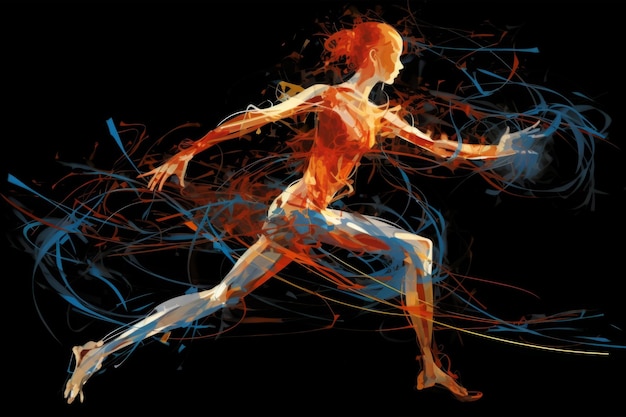
Embodied Awareness
BECOMING MORE PRESENT THROUGH MOVEMENT
Thinking creates crisp well-defined pictures that, in deep relation to what we really are, turn out to be illusion.
Deeper than thinking, our feeling gives a truer guide to what is really going on. Yet here too we can be subject to the sloshing tides of emotion that lead us away from our essential, mutual humanity.
In what we do, the actions we take, we discover a whole new strength for understanding who we truly are as human beings. This field of our actions is relatively closed to us, unconscious, Delving into this is a deed, not an idea or a feeling.
Our thinking rebels at dropping into action, claiming ‘the only safe way.’ Judgementalism in our thinking finds it difficult to become flexible, yet expanding the boundaries of right and wrong, bringing love and forgiveness into our vision of who we presently are creates a more living relationship with ourselves — and thus with others. Meditative movement is a way to see the full self more directly, through the bodily action, ‘the will’. Doing this can help our thinking, and our feeling adjust to what is really going on. Adjust to a fuller view of the truth we are.
All of our consciousness arrives through the inner boundary of the soul. The heart is in some ways like the sun, a portal to other dimensions. The I AM flows in through this ‘inner boundary’ of the soul. This flow divides immediately in two: An upward, reflective-cool that is our thinking and a downward directed-warmth that is our actions.
In its essence thinking is fear, it recoils/withdraws from the world in order to reflect upon it, creating images that are our own, individualized creations giving us a true source for individuality.
To act in the world is, in essence, to love. Refining this, so that it is more and more helpful to others — True to the All — is the course of human life, releasing karma. To become conscious in our bodily nature is the deepest awakening, to the true nature of incarnation. (more)
Having divided, thinking and action (will) curve over again towards each other, and blend in the middle, creating the ebb and flow of feeling/emotional life. Our essential self, that flows into this moment through the inner boundary of the soul, is to some extent perceptible through the transparency of our feelings, but sometimes it can be hard to distinguish this from the everyday. When we sit in silence, or take even a moment to consider what is truly going on in our feelings, it can often happen that the thinking fixes something into a belief, into an image that is no longer a living truth.
Another way to understand what is truly going on in one’s feeling life is to let it flow into action, taking space to move the body as an image of the feelings.
Understanding our feelings through the will, rather than through the thinking, gives us a complementary insight into the life of feeling that deepens our perception of self and broadens our ability to act fruitfully from our feelings with less crashing into those of others.
Meditative movement is a practice found in various streams of personal development work from Alexander Technique to Biodanza. While some of these practices elevate physical experience into spirit, others regard spirit as primary. As does Steiner, in his emphasis on cultivating our eternal aspects. Allowing the mixed, dream-world of feelings to flow into bodily movement gives us a direct, somatic experience of how consciousness is moving in us.
Practicing this requires that we drop out of the crystallising of thinking and into the constant flow of change that is our moment to moment experience. As our movement, slight or wide, smooth or shaky begins to reflect the patterns that are flowing (or raging) through our chest we begin to get greater insight, more intimate relations, and an expanded awareness of how, and who we are.
Movement of this sort can make a radical contribution to our ability to deal with our feelings, our ability to hold and not project onto others the struggles we face, and a more flexible interface between the way we feel and who we like to think we are.
In effect, this sort of attentive movement can become like a dance, varying from the wild to the passive, from the torpid to the dramatic. But what really matters is not how it looks, but whether we are allowing our other soul-aspects to find expression. This is why it is so helpful to do it alone, or in the company of others seeking the same expressive goals. Movement as an expansion of how we feel is like teasing out tangles in twine, pulling the knotted mass looser until the ends can be eased through, the loops diminished, and the full thread of consciousness becomes clear.
Even just a little time spent giving some small physical expression to the feelings of the moment can loosen the knot, make relating to the moment easier, and smooth relations with others. Unlike many traditional exercises for working with the feelings, that can easily result in pushing things down below consciousness, this is a method that allows consciousness itself to look deeper into our personal nature and assist in bringing our experiences and reactions more into the light of individual spirit.



